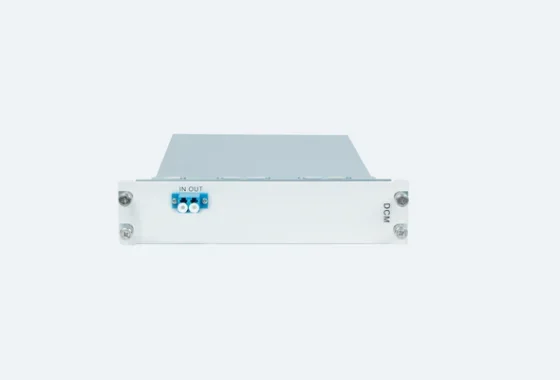Fiber optic communication has revolutionized the way information is transmitted over long distances, offering high-speed and reliable data transfer. However, one of the challenges faced in fiber optic systems is dispersion, which can degrade the quality and limit the reach of the transmitted signals. To overcome this limitation, dispersion compensation modules (DCMs) have emerged as a crucial component in optimizing fiber optic communication. This article WDMLight explores the role of dispersion compensation modules in enhancing the performance of fiber optic systems.
What are Dispersion Compensation Modules?

Dispersion compensation modules are devices specifically designed to counteract the effects of dispersion in fiber optic communication. They employ various techniques to compensate for both chromatic and polarization mode dispersion. DCMs can be implemented using different technologies, such as fiber Bragg gratings, dispersion compensating fibers, or advanced electronic signal processing algorithms.
The Role of Dispersion Compensation Modules
Dispersion compensation modules (DCMs) play a crucial role in optical communication systems by mitigating the effects of chromatic dispersion. The primary function of a dispersion compensation module is to counteract the chromatic dispersion introduced by the optical fiber. It achieves this by introducing an equal and opposite amount of dispersion, effectively canceling out the dispersion effects. DCMs are typically used in long-haul and high-speed optical communication systems, such as undersea cables, long-distance fiber links, and high-capacity data centers.
Here are some key aspects of the role of dispersion compensation modules:
1. Dispersion Compensation
Dispersion compensation modules are designed to provide precise and adjustable amounts of dispersion to compensate for the accumulated dispersion in the optical fiber. By introducing the opposite dispersion, DCMs help to restore the shape and quality of the optical signals, allowing for longer transmission distances and higher data rates.
2. Signal Quality Improvement
By compensating for chromatic dispersion, dispersion compensation modules help to minimize pulse spreading and distortion, ensuring that the optical signals maintain their integrity and quality. This enables reliable and error-free transmission of data over long distances.
3. Transmission Distance Enhancement
Chromatic dispersion limits the maximum distance over which optical signals can be transmitted without significant degradation. Dispersion compensation modules extend the transmission distance by effectively managing and reducing the dispersion effects, allowing for longer reach in optical communication systems.
4. Flexibility and Adaptability
Dispersion compensation modules are available in various configurations and form factors, allowing for flexibility in system design and deployment. They can be integrated into optical transceivers, line cards, or standalone modules, depending on the specific requirements of the system.
5. Compensation for Different Fiber Types
Different types of optical fibers exhibit varying levels of chromatic dispersion. Dispersion compensation modules can be tailored to compensate for the specific dispersion characteristics of different fiber types, ensuring optimal performance and compatibility.
Dispersion compensation modules play a vital role in optimizing fiber optic communication by mitigating the effects of dispersion. By effectively compensating for chromatic dispersion, these modules enable longer transmission distances, higher data rates, and improved signal quality. As fiber optic networks continue to expand and demand for high-speed data transmission grows, the development of advanced dispersion compensation modules will be crucial in meeting the evolving needs of the telecommunications industry.





Comments (0)